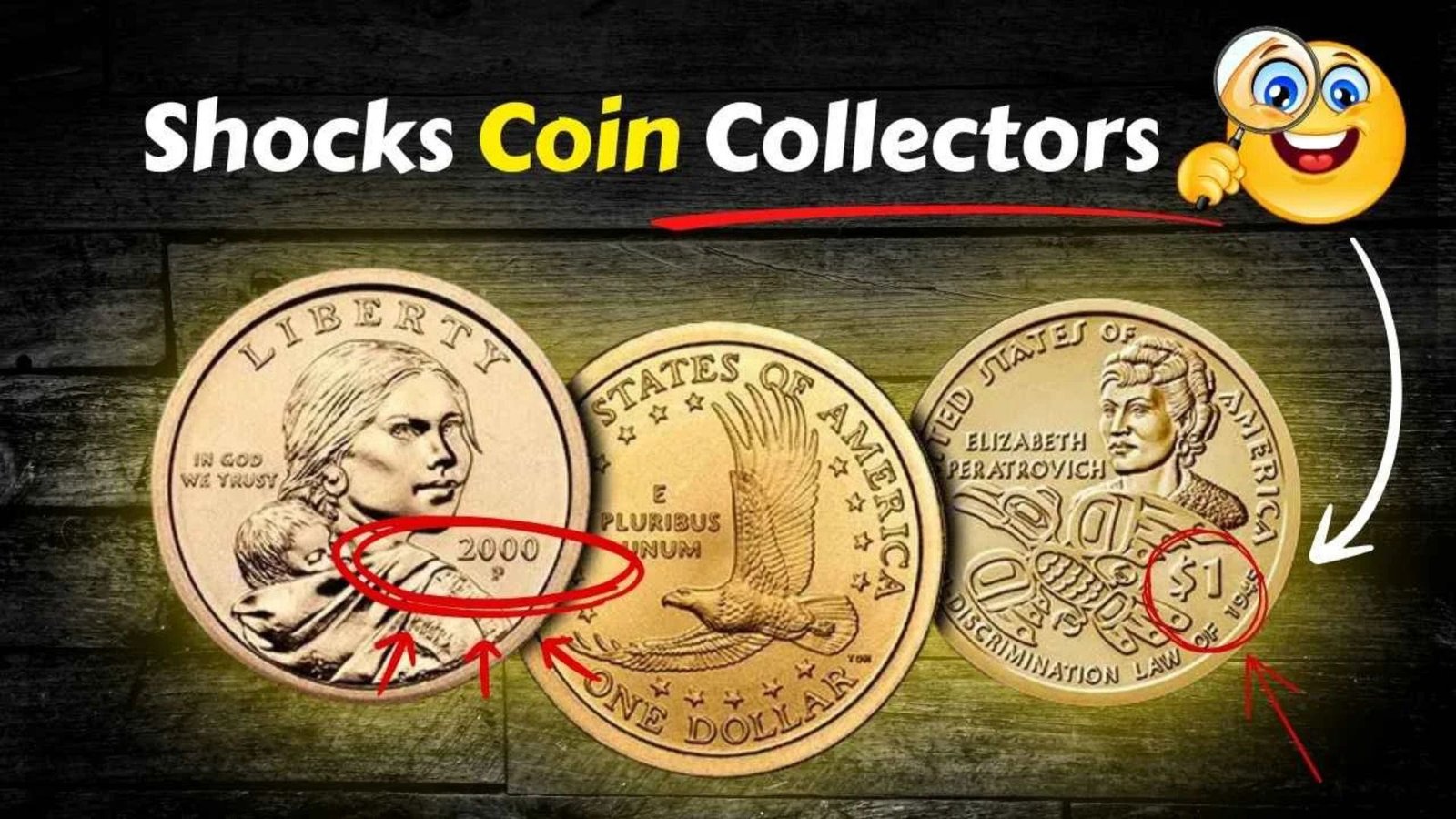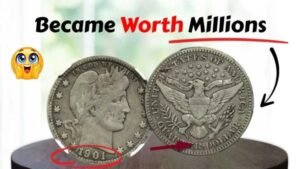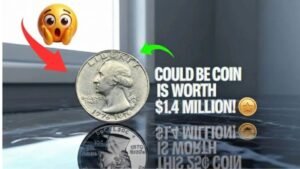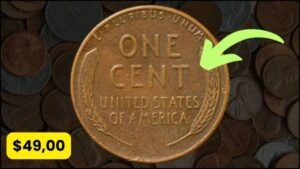Imagine pulling a shiny dollar coin from your wallet and realizing it could buy you a mansion. That’s the wild story behind the Sacagawea Dollar with eagle reverse error—a tiny mint mistake from 2000 that’s turned everyday loose change into a collector’s dream. These rare gems are still floating around in circulation, waiting for someone sharp-eyed to spot them. If you’re into coin hunting or just curious about hidden treasures, this guide breaks it all down in plain English. We’ll show you what to look for, why it’s skyrocketing in value, and how it stacks up against other errors. Ready to turn your spare change into a fortune? Let’s dive in.
What Is the Sacagawea Dollar? A Quick History Lesson
The Sacagawea Dollar hit the scene in 2000 as the U.S. Mint’s fresh take on the one-dollar coin. It replaced the clunky Susan B. Anthony dollar, which folks didn’t love much. This new coin honors Sacagawea, a brave Shoshone woman who guided explorers Lewis and Clark across the wild American West in the early 1800s.
On the front (called the obverse), you’ll see Sacagawea gently holding her baby son, Jean Baptiste, on her back—just like in real life during that epic journey. Artist Glenna Goodacre designed it with a soft, golden glow from its special metal mix: a copper core wrapped in manganese brass. The back (reverse) originally featured a proud eagle in flight, symbolizing freedom and peace, created by Mint engraver Thomas D. Rogers.
Over 767 million of these were made in Philadelphia alone that first year. They were meant for easy vending machine use and to celebrate Native American history. But here’s the kicker: not all came out perfect. Some had “errors”—oops moments at the Mint that make them super rare today.
The Big Mistake: Inside the Eagle Reverse Error
Most Sacagawea Dollars have that soaring eagle on the back from 2000 to 2008. But starting in 2009, the reverse switched to cool Native American themes each year, like peace medals or tribal stories. So, if you find a coin dated 2009 or later with the old eagle design? That’s your golden ticket!
This “eagle reverse error” happens when the Mint accidentally used the wrong die (the stamp that imprints the design). Picture a busy factory floor: workers grab the eagle stamp instead of the new theme one. Boom—a mismatch is born. These slips are called “mule errors” because they’re like odd couples from different coin families.
The result? A coin that looks mostly normal but flips the script on the back. Only a tiny handful—fewer than a dozen confirmed—exist for the Sacagawea Dollar with eagle reverse error. That’s what drives the insane value. One just sold in a hush-hush private deal for a whopping $4.2 million, blowing past earlier sales like $66,000 back in 2022. Experts say demand from big-time collectors is pushing prices higher every year.
Why Is This Error Coin Worth Millions? The Simple Scoop
Rarity is king in the coin world. With billions of regular Sacagawea Dollars out there, finding one with this error is like winning the lottery—odds are about 1 in 10 million. But it’s not just luck; these coins tell a story. They capture a human blunder in a high-tech Mint, blending history (Sacagawea’s legacy) with modern mishaps.
Values have exploded lately. A similar error fetched $2.6 million at auction in 2021, and another hit $2.1 million last year. Why the jump to $4.2 million now? Wealthy buyers see them as “blue-chip” investments—safer than stocks, with stories that wow at dinner parties. Plus, as fewer circulate (most get scooped up by pros), supply shrinks while hype grows online and at coin shows.
Fun fact: These errors slipped into banks and stores back in 2000-2008, so they’re still mixed in with everyday change. No fancy detectors needed—just your eyes and a bit of patience.
How to Spot a Rare Sacagawea Dollar: Easy Step-by-Step Guide
Think you’ve got one? Don’t panic—spotting an Sacagawea Dollar with eagle reverse error is simpler than you think. Grab a magnifying glass, good lighting, and follow these steps:
- Check the Date: Focus on coins from 2000-2008. Post-2008 ones with the eagle are prime suspects.
- Flip to the Back: Normal 2000-2008? Eagle in flight. But for 2009+? It should show themes like a corn stalk or peace pipes. Eagle there? Error alert!
- Look Close: Ensure it’s not faked. Real ones have crisp edges—no blurry stamps or added scratches.
- Weigh and Feel: These weigh about 8.1 grams with a golden shine. Counterfeits often feel off.
- Get It Graded: Take it to pros like PCGS or NGC. They’ll confirm and slap on a value tag—could be life-changing!
Pro tip: Start with bank rolls or vending machines. Hunters swear by it. If it’s real, don’t clean it—dirty coins look “lived-in” and fetch more.
Other Cool Sacagawea Errors Worth Hunting
The eagle reverse isn’t the only jackpot. The Sacagawea Dollar series is packed with flubs that pay off. Here’s a quick rundown in a handy table:
| Error Type | Description | Rarity Level | Top Sale Value | Why It’s Hot |
|---|---|---|---|---|
| Wounded Eagle (2000-P) | A scratch-like line on the eagle’s belly from a die flaw—looks like a spear wound. | Common error, but graded ones shine. | $500–$5,000 | Easy to spot; great for beginners. Over 767 million base coins, but flaws are scarce. |
| Cheerios Variety (2000) | Extra-detailed tail feathers from promo boxes of Cheerios cereal. About 5,000 exist. | Very rare. | $10,000–$50,000 | Tied to a fun 2000 promo; crisp details pop under light. |
| Mule with Washington Quarter (2000) | Sacagawea front + George Washington quarter back. Only 11 known. | Ultra-rare. | $100,000+ | Ultimate mismatch; history-meets-error vibe. |
| Rotation Error (2011-P) | Eagle turned 180 degrees wrong. | Extremely rare. | $2.2 million | Fresh find; alignment flub screams “factory fail.” |
| Off-Center Strike | Design shifted, missing edges. Varies by how off. | Rare to very rare. | $200–$10,000 | Unique looks; each one’s a snowflake. |
This table shows why the Sacagawea Dollar with eagle reverse error tops the list—its $4.2 million sale crushes the rest. Hunt smart: Focus on “P” mint marks from Philadelphia.
Real-Life Wins: Stories from Lucky Finders
Coin forums buzz with tales. One guy in Arkansas bought a bank roll in 2000 and found a mule error—sold it for six figures, quit his job. Another Reddit user (u/Extension_Tackle0) pulled a Wounded Eagle from change last year, now worth $1,000+. These aren’t myths; they’re your motivation. Share your hunts on X or Reddit—communities love swapping tips.
Tips to Cash In on Your Find
Stumbled on a suspect? Act fast but smart:
- Don’t Spend It: Pocket it safe.
- Authenticate: Use apps like CoinSnap or visit a dealer.
- Sell Smart: Auctions like Heritage or eBay for quick cash; private sales for max bucks.
- Taxes? Yep: Uncle Sam wants a cut on big wins—chat with a pro.
Wrapping It Up: Your Change Could Change Everything
The Sacagawea Dollar with eagle reverse error proves treasures hide in plain sight. From a Mint slip-up to a $4.2 million payday, it’s the stuff of legends. Whether you’re a newbie rifling through jars or a pro chasing rarities, start today. Who knows? That vending machine dollar might be your ticket to freedom. Got a coin to check? Drop details in the comments—we’re all in this hunt together.




